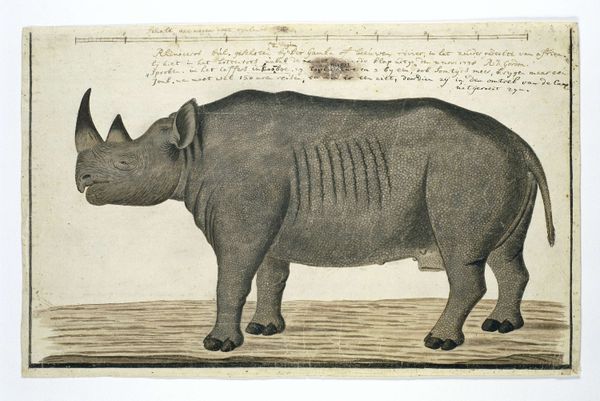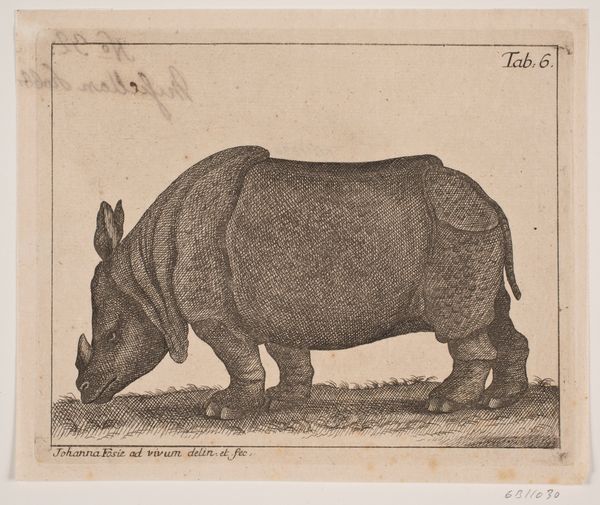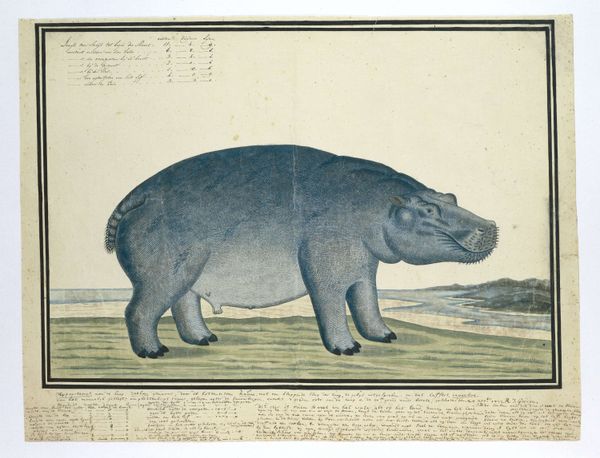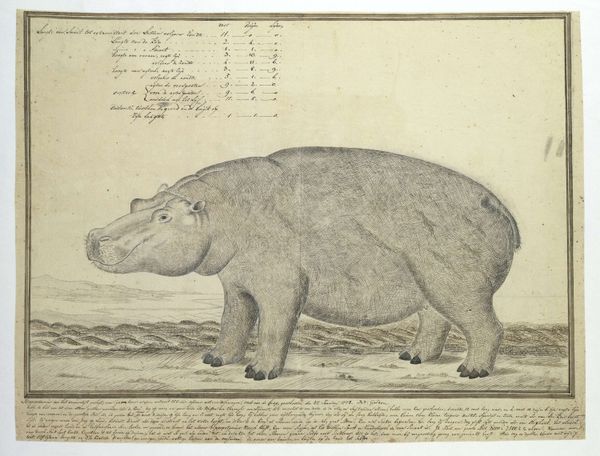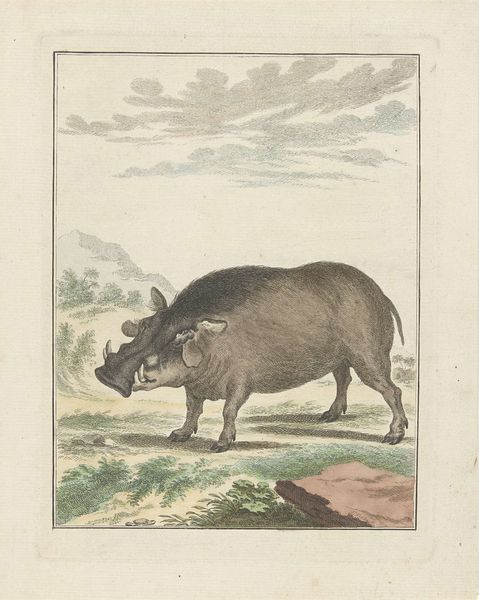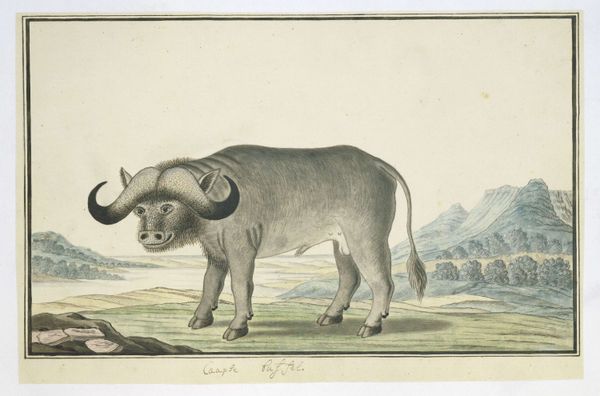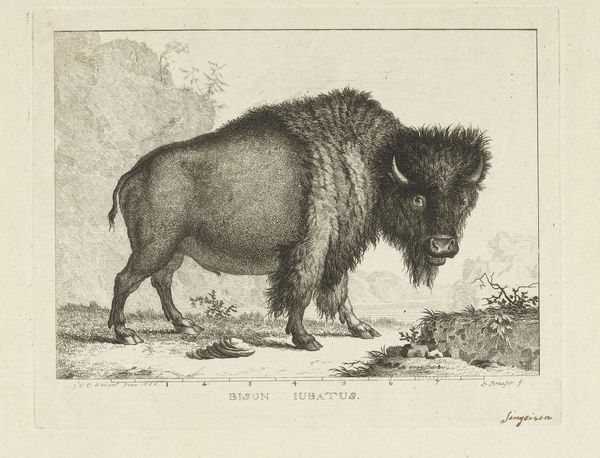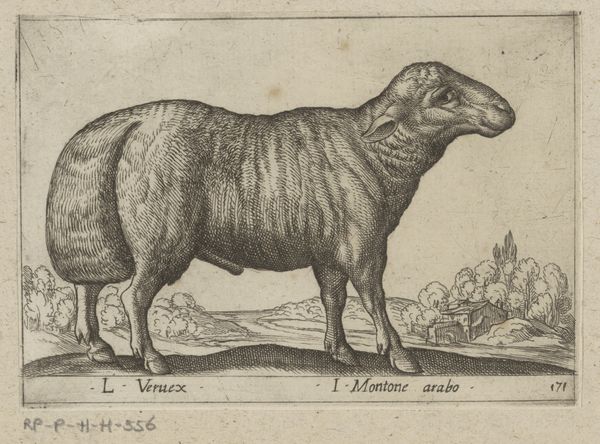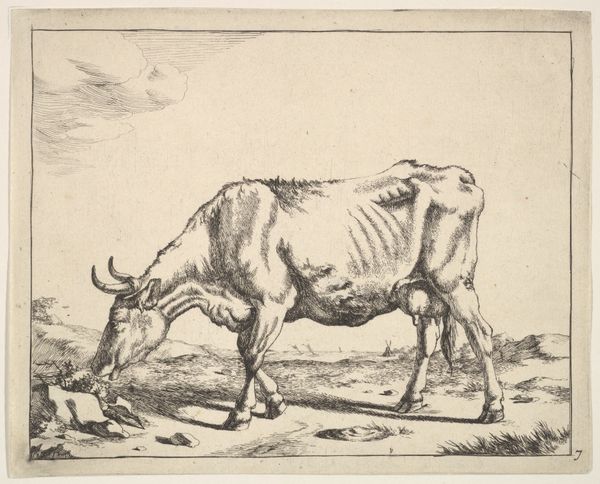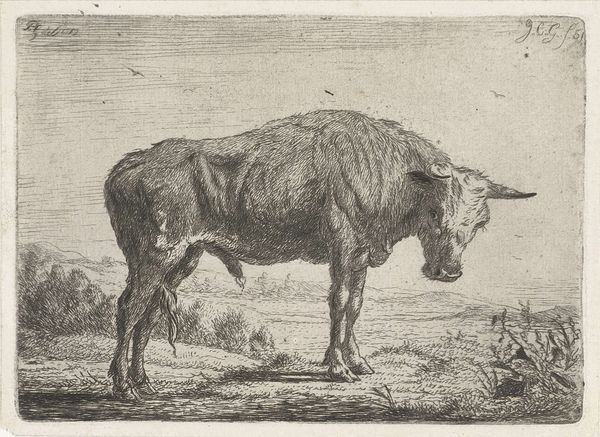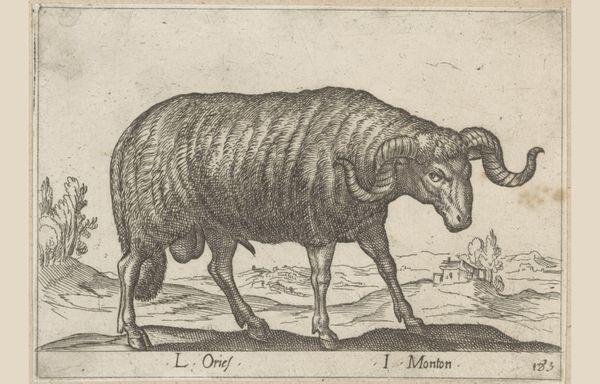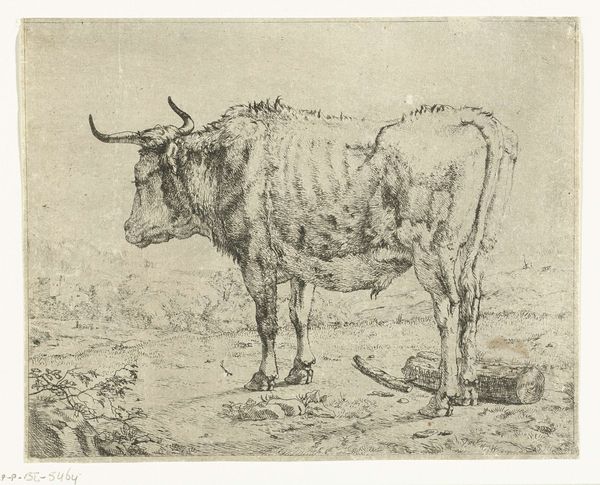
drawing, paper, ink, engraving
#
portrait
#
drawing
#
animal
#
landscape
#
paper
#
ink
#
engraving
#
realism
Dimensions: height 660 mm, width 480 mm, height 261 mm, width 412 mm, height mm, width mm
Copyright: Rijks Museum: Open Domain
Curator: Standing before us is a detailed engraving entitled *Diceros bicornis (Black Rhinoceros)* attributed to Robert Jacob Gordon from after 2. The meticulous lines and textures immediately catch the eye. Editor: My first impression? It feels so…stolid. It’s almost a geological presence rather than a breathing animal. There's something so factual, like an entry in an explorer's field journal. Curator: Indeed! It's presented almost like a specimen. Given the period, the drawing probably fulfilled scientific and representational functions. These engravings and ink drawings played a pivotal role in documenting and classifying the natural world. The artist was trying to offer us insight. Editor: Right, and the lines...notice those curious lines carved into the side, how linear they are! In a way, that feels less about portraying a *particular* rhino and more about conveying "rhino-ness," if you follow? Curator: I see what you mean. The vertical lines could be interpreted as symbolic markers. Scars? Territorial signs? Wounds from an encounter? The image acts as an icon, crystallizing the rhino’s identity and existence. Editor: Icons don't always require elaborate staging. I'm drawn to the subtle details. How Gordon employed such delicate stippling to suggest the density of the hide! And then, juxtaposed with those sharp horns that just pierce the space! Curator: True. It's an artwork that speaks volumes, beyond just biological description, resonating with stories of Africa. It also sparks a conversation about humanity's role in documenting, interpreting and also endangering the very creatures it observes. Editor: And that interplay between observation and representation. Gordon offers us something so powerful: it embodies, doesn’t just mimic, a presence. After this brief observation, I wonder, in the great theater of existence, what role have we humans played? Curator: Yes, truly! It nudges us to ponder the weight of our cultural baggage in perceiving another creature's life! It is up to us, therefore, to do something so it may one day never have to wonder whether or not we appreciate its time on Earth.
Comments
No comments
Be the first to comment and join the conversation on the ultimate creative platform.
